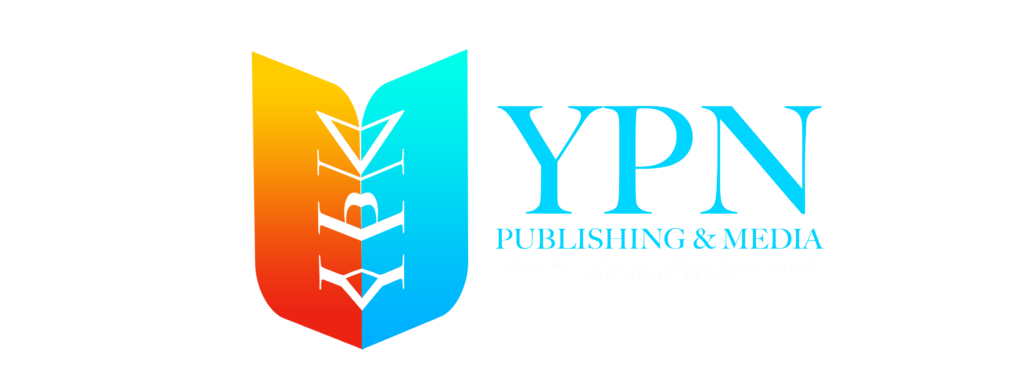Infographics are an incredibly effective tool for authors and publishers who want to connect with their readers in a deeper way, simplify complex concepts, and keep them engaged throughout the reading experience. In today’s fast-paced digital world, readers often prefer content that is visually appealing and easy to digest. Infographics offer a perfect solution to provide valuable information in a concise, visually engaging, and easy-to-understand format. But how can you use infographics in your book or marketing material without creating additional stress or overcomplicating the process? Here’s how you can effortlessly incorporate infographics into your content to enhance your book, your audience’s experience, and ultimately, your connection with your readers.
1. Simplify Complex Ideas
One of the primary benefits of using infographics is their ability to simplify complex ideas. When writing a book, especially in genres like nonfiction, self-help, or educational books, you might need to explain intricate concepts that could overwhelm your readers. Infographics provide a visual breakdown of these ideas, making them easier for your audience to understand.
For instance, if you’re writing a book about leadership or business strategies, infographics can effectively simplify complicated models or frameworks into digestible visuals that are easier for readers to grasp. Instead of writing out long, detailed paragraphs explaining processes, an infographic can summarize the information in a clear, visual form. This makes complex subjects more approachable, ensuring your readers stay engaged and don’t lose interest in the material.
For example, in a book about business or finance, if you need to explain complicated financial data, an infographic can visually represent the steps or processes involved in a financial model, offering readers a quick overview without overwhelming them with jargon. Infographics not only simplify understanding but also increase retention by offering a more engaging way to absorb key points.
2. Break Up Text and Enhance Visual Appeal
Books that are dense with text can sometimes feel overwhelming to readers, especially those who may prefer visual content. Long passages of writing may cause your audience to lose interest, which can hurt your book’s effectiveness. By using infographics strategically, you can break up large blocks of text and provide visual relief. This not only makes the reading experience more enjoyable but also helps maintain the reader’s focus and engagement with your content.
Infographics serve as an excellent tool to add variety to your pages and offer your readers a visual breather from the text. For instance, in a self-help or how-to book, you can use infographics to summarize a chapter’s main ideas, illustrate processes, or highlight key takeaways. This keeps the content from feeling monotonous, and visually engaging elements like graphs, charts, and illustrations give your book a more dynamic feel, which helps retain the reader’s attention.
Incorporating infographics in key sections of your book can also make your content more visually appealing. The use of bold colors, icons, flowcharts, and diagrams draws the reader’s eye, increasing overall engagement. For example, if you’re writing a book on health or wellness, an infographic can help your readers visualize a meal plan or exercise routine, turning otherwise dry information into something more engaging.
3. Improve Reader Understanding and Retention
Infographics can significantly improve a reader’s ability to understand and retain information. Research has shown that people are more likely to remember content when it is presented visually rather than just textually. This is because our brains process visual information much faster and more effectively than written content alone.
For authors, this means that using infographics in your book or marketing materials can make it easier for readers to understand and remember key ideas, principles, and messages. For instance, if you’re writing a technical book about digital marketing or data science, you might explain complicated topics that could be challenging to understand in text alone. By incorporating infographics, you give your readers an alternate visual format that’s easier to follow and much more memorable.
Additionally, infographics can be used to break down large sections of data into bite-sized, digestible pieces. If your book is heavily data-driven, presenting these statistics and facts through visuals ensures that readers will grasp your message more effectively. For example, if you’re writing about environmental sustainability, using a well-designed infographic to showcase carbon emissions or the impact of climate change can help readers understand and remember the information better than a text-heavy approach.
4. Increase Engagement with Interactive Infographics
Infographics don’t have to be static to be effective. By adding interactivity, you can create a more engaging and dynamic experience for your readers. Interactive infographics are especially useful in digital books, eBooks, and online marketing materials. Features such as clickable links, animated visuals, or interactive charts can transform a simple infographic into an engaging, dynamic tool that enhances the reader’s interaction with your content.
For instance, if you are writing a non-fiction book on personal finance or investing, you can include an interactive infographic that allows readers to input their own data and generate personalized financial advice or predictions. This level of interactivity takes the reader’s experience to the next level, giving them more control over how they interact with the content, leading to higher engagement.
Interactive infographics can also be used to provide additional layers of information without overwhelming the reader with text. For example, in a self-help book, you could include a clickable infographic that allows readers to explore different sections of a personal development plan based on their goals and interests. This feature can increase your book’s value and keep your readers coming back for more.
5. Use Infographics to Showcase Data and Statistics
Authors who rely heavily on data and statistics in their books can benefit greatly from using infographics. Instead of presenting raw numbers or lengthy descriptions, you can use pie charts, bar graphs, or timelines to present your data in a way that is visually appealing and easier for readers to digest.
For instance, if you are writing a book on economics, health, or politics, you can visually represent trends, comparisons, or statistics through infographics. Instead of lengthy, confusing paragraphs filled with numbers, you can present the same data in a pie chart or bar graph that allows readers to quickly absorb the key points. This technique not only enhances understanding but also makes the data more relatable and memorable.
Using infographics to represent key data in your book allows readers to digest large amounts of information more efficiently and helps your book stand out. Additionally, the visual representation of the information often appeals to a wider audience, making your content more accessible to people who may otherwise feel overwhelmed by traditional data-heavy formats.
6. Guide Readers with Visual Storytelling
Infographics are not just about presenting data; they can also be used as a form of visual storytelling. Instead of simply listing information, infographics can help guide your readers through a narrative in a way that’s visually engaging.
In genres like self-help, memoirs, or business, you might want to show your readers the progression of a story or process. An infographic can serve as a guide that takes your readers through a series of steps, milestones, or key moments in a simple and visually appealing way. This type of visual storytelling is effective for helping readers understand the journey you’re sharing and can make complex content feel more approachable.
For example, in a business book, you could use an infographic to depict a timeline of company growth, showcasing important achievements and lessons learned along the way. This provides readers with a clear and easy-to-follow visual representation of your journey, making the information more relatable and memorable.
7. Integrate Infographics in Your Marketing Strategy
Once your book is published, infographics can play an essential role in your marketing strategy. Infographics are highly shareable, meaning they can be shared across social media platforms, in emails, or on your website to promote your book to a wider audience.
You can create visually engaging infographics that summarize key points from your book or highlight important facts and statistics. These shareable visuals can generate curiosity, increase brand visibility, and help attract potential readers to your website or book page. Whether you’re sharing snippets of your book’s content or promoting specific themes and topics, infographics can increase the shareability and effectiveness of your marketing efforts.
The visual nature of infographics makes them more likely to go viral, as people enjoy sharing interesting and visually appealing content with their networks. By leveraging infographics in your book’s promotional strategy, you can drive traffic to your website, increase your book’s exposure, and ultimately boost sales.
8. Make the Complex Simple
Whether you’re explaining a complicated process, telling a detailed story, or showcasing intricate data, infographics can make complex information more accessible. Readers who are unfamiliar with certain concepts will appreciate the simplified approach, and those who are already familiar with the topic will appreciate the clarity and visual representation.
For instance, if you’re writing about marketing strategies, rather than explaining the entire process in lengthy paragraphs, you can create an infographic that illustrates the key components in a simple, digestible way. By simplifying complex ideas, you can ensure that your readers will stay engaged with your book, and they’ll leave with a clearer understanding of the concepts you’re discussing.
Conclusion
Using infographics in your book or marketing material can be a game-changer for connecting with readers without adding unnecessary stress to the process. They offer a powerful and visually appealing way to simplify complex ideas, break up text-heavy content, and keep readers engaged throughout the journey. By strategically integrating infographics into your writing, you not only improve the readability of your book but also make it more memorable, engaging, and enjoyable for your audience.
At YPN Publishing, we understand the importance of clear, engaging visuals in enhancing the reader’s experience. Let us help you create high-quality infographics that can elevate your book, making it more engaging, easier to understand, and more likely to leave a lasting impression on your readers.
For more information, visit our website: ypnpublishers-media.com or contact us at info@ypnpublishers-media.com.












